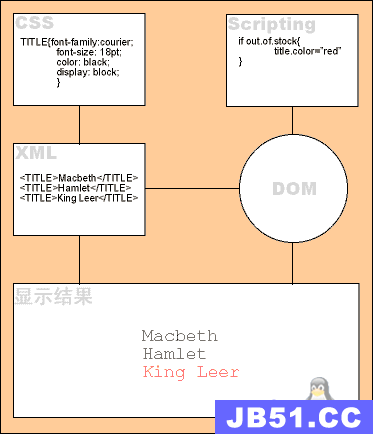https://www.developphp.com/video/PHP/simpleXML-Tutorial-Learn-to-Parse-XML-Files-and-RSS-Feeds
但我无法理解如何提取媒体:来自Feed的内容图片.我已经阅读了尽可能多的信息,但我仍然卡住了.
即:How to get media:content with SimpleXML
这建议使用:
foreach ($xml->channel->item as $news){
$ns_media = $news->children('http://search.yahoo.com/mRSS/');
echo $ns_media->content; // displays "<media:content>"}
但我无法让它发挥作用.
这是我正在尝试解析的脚本和提要:
<?PHP $html = ""; $url = "http://RSSFeeds.webmd.com/RSS/RSS.aspx?RSSSource=RSS_PUBLIC"; $xml = simplexml_load_file($url); for($i = 0; $i < 10; $i++){ $title = $xml->channel->item[$i]->title; $link = $xml->channel->item[$i]->link; $description = $xml->channel->item[$i]->description; $pubDate = $xml->channel->item[$i]->pubDate; $html .= "<a href='$link'><h3>$title</h3></a>"; $html .= "$description"; $html .= "<br />$pubDate<hr />"; } echo $html; ?>
我不知道将此代码添加到脚本中以使其工作.老实说,我浏览了几个小时,但找不到可以解析媒体的工作脚本:内容.
有人可以帮忙吗?
========================
更新:
Thanx to fusion3k,我得到了最终的代码:
<?PHP $html = ""; $url = "http://RSSFeeds.webmd.com/RSS/RSS.aspx?RSSSource=RSS_PUBLIC"; $xml = simplexml_load_file($url); for($i = 0; $i < 5; $i++){ $image = $xml->channel->item[$i]->children('media',True)->content->attributes(); $title = $xml->channel->item[$i]->title; $link = $xml->channel->item[$i]->link; $description = $xml->channel->item[$i]->description; $pubDate = $xml->channel->item[$i]->pubDate; $html .= "<img src='$image' alt='$title'>"; $html .= "<a href='$link'><h3>$title</h3></a>"; $html .= "$description"; $html .= "<br />$pubDate<hr />"; } echo $html; ?>
基本上我只需要这个简单的线:
$image = $xml->channel->item[$i]->children('media',True)->content->attributes();
不可否认,非技术人员在阅读了数十篇帖子和文章后,在网上找到这些信息是如此困难.好吧,希望这对我这样的其他人有用:)
$ns_media = $news->children('http://search.yahoo.com/mRSS/');
/* Echoes 'url' attribute: */
echo $ns_media->content->attributes()['url'];
// in PHP < 5.5: $attr = $ns_media->content->attributes(); echo $attr['url'];
/* Catches 'url' attribute: */
$url = $ns_media->content->attributes()['url']->__toString();
// in PHP < 5.5: $attr = $ns_media->content->attributes(); $url = $attr['url']->__toString();
命名空间说明:
– > children()参数不是XML的URL,而是Namespace URI.
06001
因此,在您的情况下,< media:content>是Namespace“media”的“content”元素. Namespaced元素必须具有关联的Namespace URI,作为父节点的属性或 – 最常见的 – 根元素的属性:此属性的格式为xmlns:yyy =“NamespaceURI”(在您的情况下为xmlns:media =“http:/ /search.yahoo.com/mRSS/“作为根节点的属性< RSS>).
最终,上面的$news-> children(‘http://search.yahoo.com/mRSS/’)意味着“将http://search.yahoo.com/mrss/的所有子元素检索为命名空间URI;另一种 – 最容易理解的 – 语法是:$news-> children(‘media’,True)(True表示“被视为前缀”).
回到示例中的代码,检索具有前缀media的所有第一个项目的子代的通用语法是:
$xml = simplexml_load_file( 'http://RSSFeeds.webmd.com/RSS/RSS.aspx?RSSSource=RSS_PUBLIC' ); $xml->channel->item[0]->children( 'http://search.yahoo.com/mRSS/' );
或(相同的结果):
$xml = simplexml_load_file( 'http://RSSFeeds.webmd.com/RSS/RSS.aspx?RSSSource=RSS_PUBLIC' ); $xml->channel->item[0]->children( 'media',True );
你的新代码:
如果您想要显示< media:content url>页面中每个元素的缩略图,以这种方式修改原始代码:
(...) $pubDate = $xml->channel->item[$i]->pubDate; $image = $xml->channel->item[$i]->children( 'media',True )->content->attributes()['url']; // in PHP < 5.5: // $attr = $xml->channel->item[$i]->children( 'media',True )->content->attributes(); // $image = $attr['url']; $html .= "<a href='$link'><h3>$title</h3></a>"; $html .= "<img src='$image' alt='$title'>"; (...)

